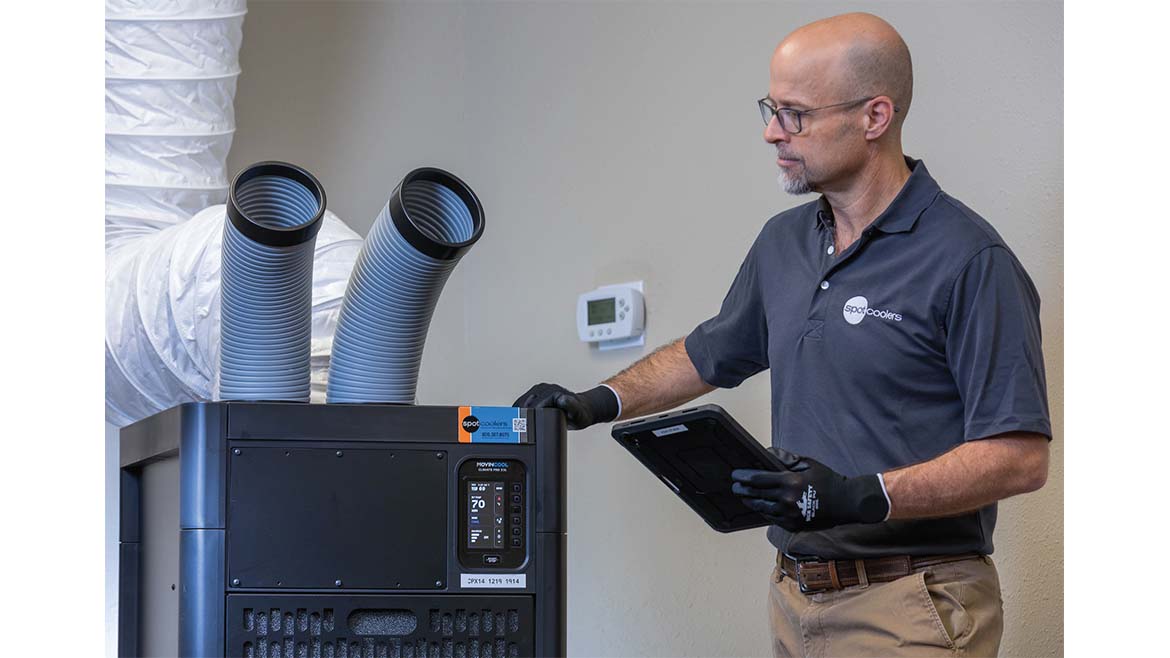Manufacturers See Increased Demand for Portable Air Conditioners
Temporary solutions become viable long-term options

When consumers hear the word “portable,” they often associate it with temporary or short-term solutions. This was the foundation of the portable cooling industry, but as COVID-19 and the ongoing supply chain issues persist, consumers are now looking to portables to solve more of their residential and commercial needs. Joe Lamb, director, Carrier Rental Systems and Spot Coolers, said some customers are buying these portable products for their own fleet. He said that even though rental products are temporary, they’re designed for planned and unplanned events, so having them available as a backup will always prove useful.
“They offer an intelligent design, they've got smart engineering, they're efficient, they cut costs for the buildings, so it provides customers that are experiencing any kind of a product delay with a great option during the crisis that we’re going through,” explained Lamb.
According to Lamb, customers have been patient when it comes to product delays and longer lead times, but while they wait, many consumers have been drawn to explore the rental route. Lamb said he believes the demand for portable solutions is going to continue to rise, so the best way to be able to provide the end customer with everything they might need is to have strategic relationships with suppliers and try to stay ahead of the curve.
The Evolution of Portable A/C
When the pandemic began and everyone was sent home, many people realized that home comfort is more than just keeping each occupied room at a reasonable temperature — improving indoor air quality was also a must. Brittany Calderon, product manager of consumer products, Friedrich Air Conditioning Co., said while it was normal for IAQ to be on the minds of homeowners during allergy season or similar times of the year, it has now evolved into an expectation year-round. She added that luckily, air conditioning systems are often combined with air filtration in some shape or form — and portable units are no exception.
“There is a positive impact to air quality when using the air filtration that typically comes with a portable air conditioner. For example, [Friedrich] air conditioners are shipped with washable antimicrobial filters, which are effective at capturing larger pathogens,” explained Calderon.
She said because many portable units now offer more than just air conditioning, the door is open for these “temporary” solutions to become a long-term staple. Portable units can be an air conditioner, dehumidifier, fan, or even a heater, said Calderon, and they have grown to be used in a wide variety of applications.
While these products used to primarily be geared toward residential use, Calderon said portable cooling systems are being used more than ever before in commercial settings. In some cases, Calderon said these portable systems provide a cheaper, more efficient way to improve indoor air circulation and quality than upgrading or replacing an existing system.
“I think we're seeing more of where financially upgrading an existing central system doesn't make sense; however, bringing in supplemental cooling and dehumidifying products gets you to your goal in a more efficient way,” explained Calderon.
Vice president of sales, KwiKool
Meeting the Rising Demand
While booming business is a good thing, keeping up with demand is another story. Calderon said that many manufacturers were not able to predict the extent of the demand for portable air conditioners. The production of products in this category — much like every other HVAC category — was impacted by major events such as COVID-19, the microchip shortage, supply chain issues, and the Russian invasion of Ukraine. As a result, Calderon said many manufacturers are buying materials ahead of time whenever they have the option to because they fear that things might not be available at a later date.
Mike Renier, vice president of sales, KwiKool, said even if manufacturers build their products with 70-80% American-made parts, there’s still no guarantee that they will always be readily available because many of those components use foreign parts as well. Instead of focusing on what is out of their control, Renier said one way manufacturers can handle the rising demand is to be transparent with their customers and educate them on how to solve their air conditioning problems effectively.
“I don't bog them down with engineering tech terminology — I'm not here to impress people. My focus is providing affordable, value-added solutions to a customer's application, and it's really a simple sales concept,” said Renier. “Customers might not have the money for the system I suggest — I understand, and that's unfortunate — but it doesn't change what they need.”
Renier said the customer perception of portables is that they’re a generic, one-size-fits-all product, but that’s not the case. According to Renier, some units are not particularly cheaper than permanent installs, but during the times of uncertainty many people are facing nowadays, flexibility is essential. He suggested that investing in a strong, portable solution can be more beneficial in some applications than installing a permanent system in an office that someone might move out of.
Size is also an important consideration to make customers aware of. Renier gave the example of an IT server room and said buying a 1-ton portable air conditioner as a backup for a 10-ton permanent cooling unit would be a waste of money because it would not be able to sufficiently cool the room.
“Don't hand a man a screwdriver if he needs a scalpel. Get him as close to the particular product that he needs to solve his problem and give him the value that he's asking for, as opposed to just any old solution that gets him by,” said Renier.







